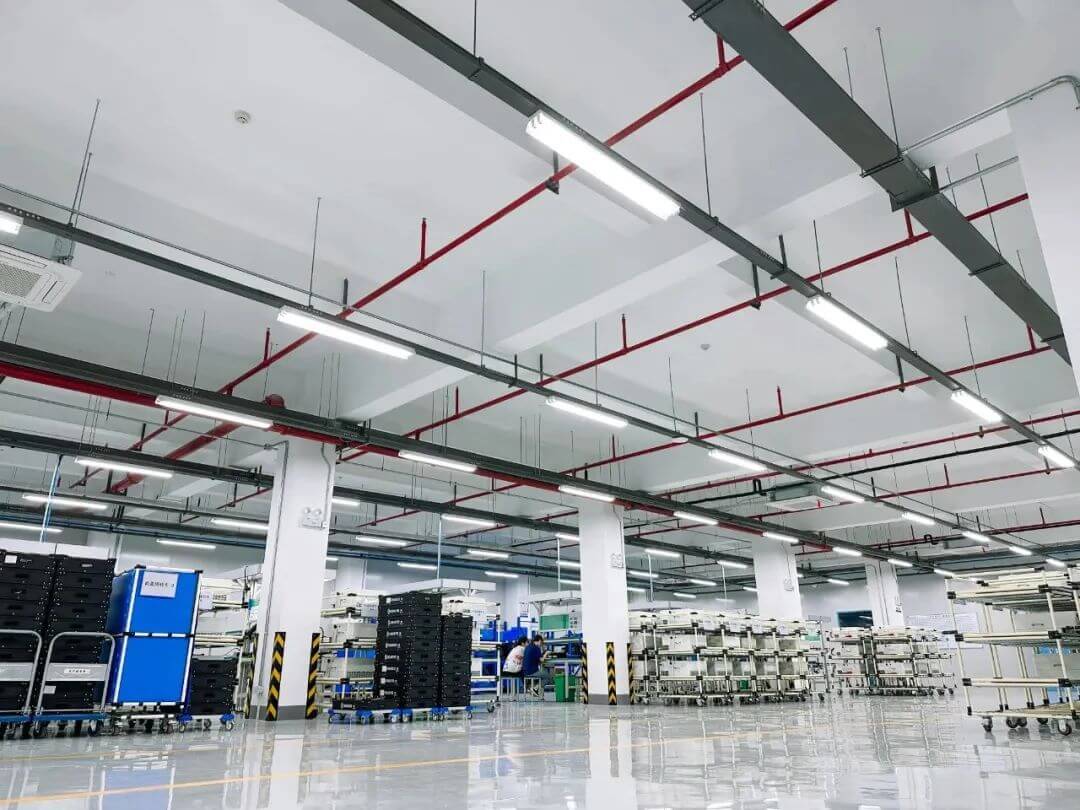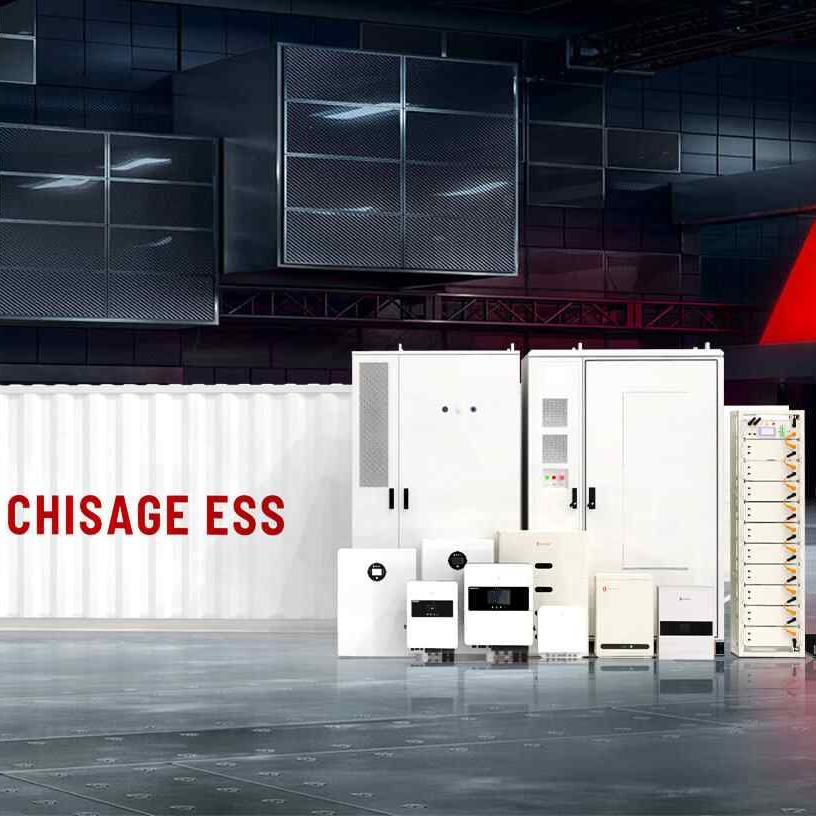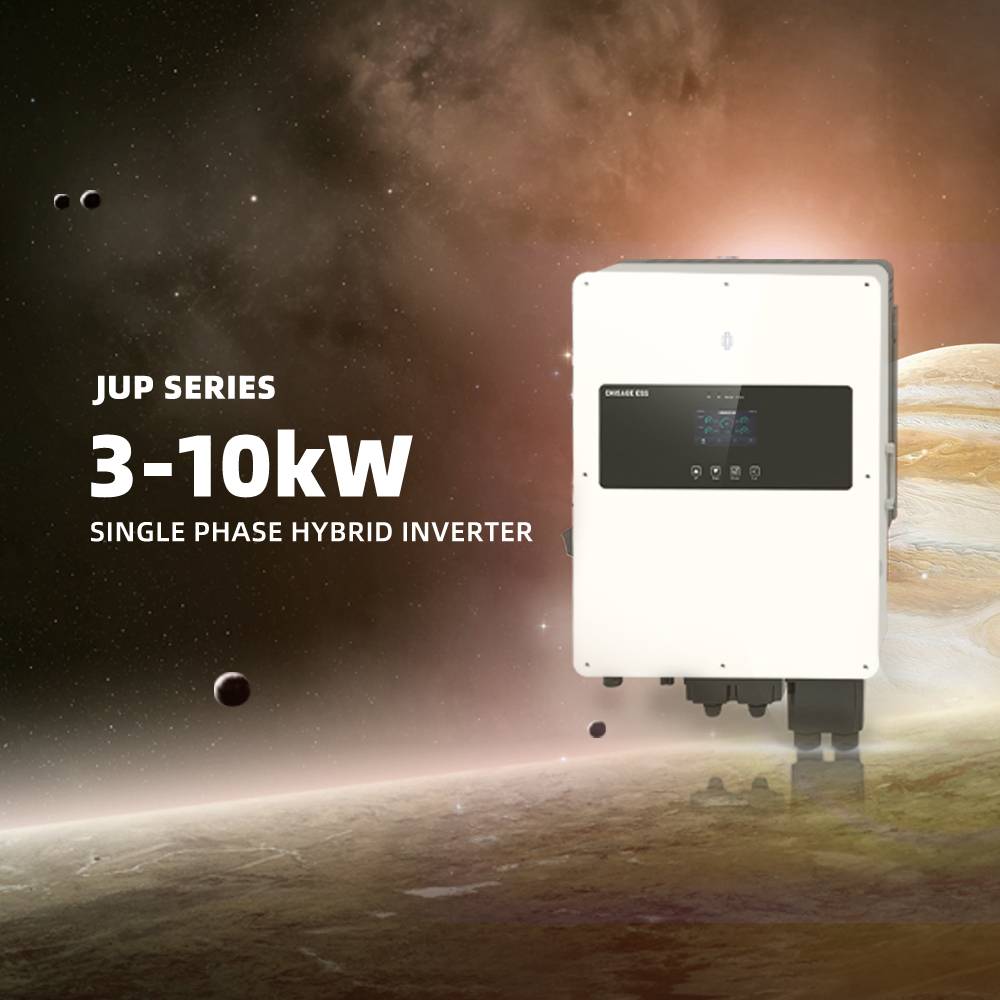Introduction: Inverters are the core component of the photovoltaic power generation and energy storage system industry chain, belonging to a technology-intensive industry. The birth of a qualified inverter relies on the long-term practice, exploration, and technological accumulation of enterprises in product design, manufacturing process, and component selection. Many fans of CHISAGE ESS are curious about how their inverters are produced. Today, let’s take a closer look and explore the secrets of CHISAGE ESS inverter production line together with the footsteps of the editor~
Production Line Overview
In May 2023, CHISAGE ESS held the inaugural inverter offline and groundbreaking ceremony, marking the official start of the inverter production line. Currently, our inverter production line covers an area of 10,000+ square meters and can produce 3000+ inverters per month, fully capable of mass production and delivery. In the next phase, two new production lines will be introduced successively, ensuring that our production capacity keeps up with market demand.

As our sight turns, the mysterious gate of CHISAGE ESS inverter factory comes into view. Passing through the elevator, the enthusiastic receptionist leads us into the production line area. We pass through 16 areas, including the PCBA & Electronics Warehouse, Assembly Workshop, Testing Zone, Aging Zone, Finished Goods Warehouse, Packaging Workshop, R&D Office, and Equipment Maintenance Room. The spacious and bright space, along with the clean and tidy layout, is a result of the 8S management of the inverter factory, which fully embodies efficiency, aesthetics, and sustainability.

During the initial design of the production line, we conducted investigations and gained an understanding of the industry’s representative inverter production line design routes and schemes. From overall planning and design to the design of the workflow for personnel, materials, and equipment, as well as the selection of the production line, equipment, and testing, we benchmarked the industry’s best practices, effectively avoiding potential issues that may occur in other similar companies.

The workshop maintains a constant temperature and humidity environment to ensure the safety and reliability of various precision components. At the same time, advanced production equipment is equipped for each process, and workers carry out production work in strict quality control. Each step undergoes meticulous operation and rigorous inspection to ensure the high quality of the inverter products.

process flow
The production process of CHISAGE ESS’s inverter mainly consists of four major sections: SMT, DIP, assembly testing, and packaging. This time, we will focus on the assembly testing and packaging process, which can be further divided into several steps: pre-processing, assembly, insulation withstand voltage testing, TI testing, aging testing, T2 testing, safety compliance testing, airtightness testing, packaging, and palletizing for storage.
01 Pre-processing:
mainly involves IGBT forming and IGBT different plug-in soldering two key processes. IGBT forming needs to strictly control the IGBT forming pressing angle of 90±3°to ensure that the connection point is accurate, and 100% full inspection; IGBT soldering need to be full, can not leakage of weld, false weld, empty weld, false weld, package weld, 100% full inspection after welding.

02 Assembly:
It mainly involves the assembly and layout of the main functional parts inside the inverter, including the high-voltage power version, low-voltage power board, adapter board, capacitor board, main control board, etc. The assembled inverter takes shape, allowing the basic functions to run.

03 Insulation and voltage withstand test:
Add the inverter to a certain voltage level for a certain period of time to detect whether the insulation and voltage withstand capability of the inverter is in accordance with the regulations to avoid the danger of electric shock.

04 TI test:
Test the overall performance of the inverter and calibrate the standard parameters set. Our company is equipped with 4 sets of TI testing equipment, which can complete one inverter test every 15 minutes. I asked the production supervisor and learned that our testing standards are synchronized with the European market, I think this is one of the reasons why CHISAGE ESS, as a new brand, has won the trust of most users in a short time.

05 Aging Test:
As a key step in inverter testing, it simulates the inverter operation performance under extreme environment, such as extremely high temperature and extremely low temperature, to ensure the product quality and reliability, and also to provide a reference basis for later inverter maintenance. At present, our company is equipped with 8 sets of aging equipment, each of which can be connected to 12 inverters at the same time, so as to realise simultaneous testing of 96 inverters.
In addition, according to my understanding, the aging time for regular products in the industry is 2 hours. As a new brand, we have strict control over the aging process, and currently, the aging time for each machine is 48 hours. Afterward, we will gradually reduce the aging time based on the feedback from the market. However, improving efficiency does not mean compromising quality. We still benchmark against top industry standards to ensure that every inverter can be used by users with peace of mind.

06 T2 testing:
After the aging process, slight changes in the internal performance of the inverter may occur. T2 testing is conducted to ensure the safety and stability of the product. Our company is equipped with four T2 testing devices, with each inverter test completed every 15 minutes.

07 Safety compliance testing:
This involves testing electrical safety, material safety, electromagnetic compatibility, environmental safety, and other aspects according to the requirements of different countries and regions. It ensures that the inverter complies with relevant safety regulations and standards, and does not cause harm or danger to users, the environment, or other devices under normal operating conditions.

08 Airtightness testing:
Our inverter products need to achieve IP65 protection level. In the process of testing the airtightness of the inverter, the equipment injects a certain air pressure into the interior of the inverter for 90 seconds, stabilizes for 3 seconds, and then releases the air for 3 seconds, checking for changes in internal pressure parameters that should not exceed the standard leakage range.

09 Packaging:
Adopt automatic packing machine to tie and pack the package in one line. In a short time to complete a large number of production tasks at the same time, but also to ensure that the sealing effect is flat, standardized and beautiful.

10 Palletizing for Storage:
Currently, our company palletizes 4 boxes of inverters as a standard practice, using stretch film to package and arrange the inverters in an orderly manner in the warehouse, ready for shipment.

After layers of precise and complex processes, CHISAGE ESS inverters were finally delivered to customers successfully. Behind each inverter, the professional skills and hard work of the workers, and the manufacturing strength and technology level of the company are united.
The mystery tour of the inverter production line has come to an end, but the story of CHISAGE ESS is still going on. We are looking forward to more visits and exchanges from our global partners to explore more exciting contents together.


